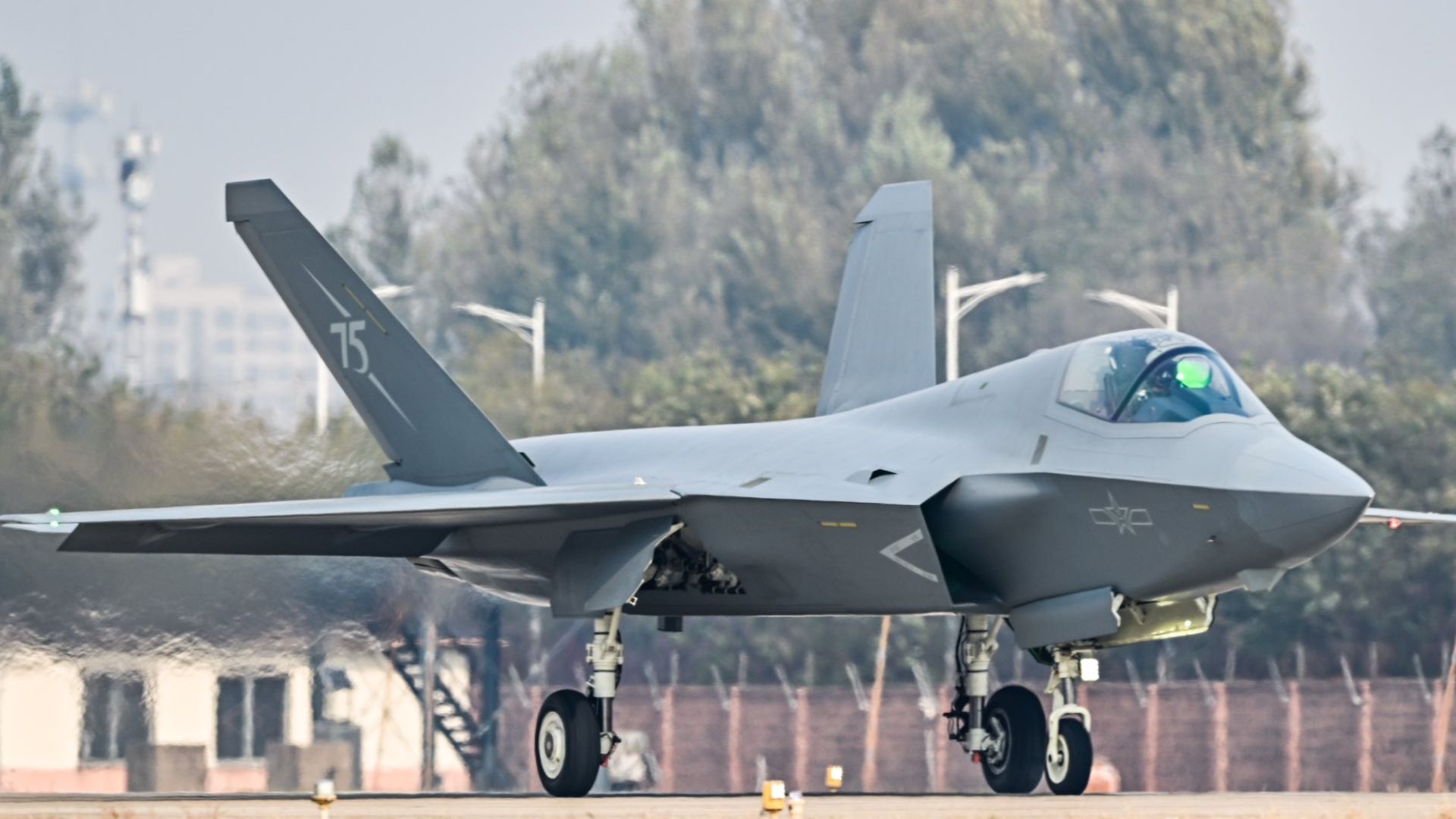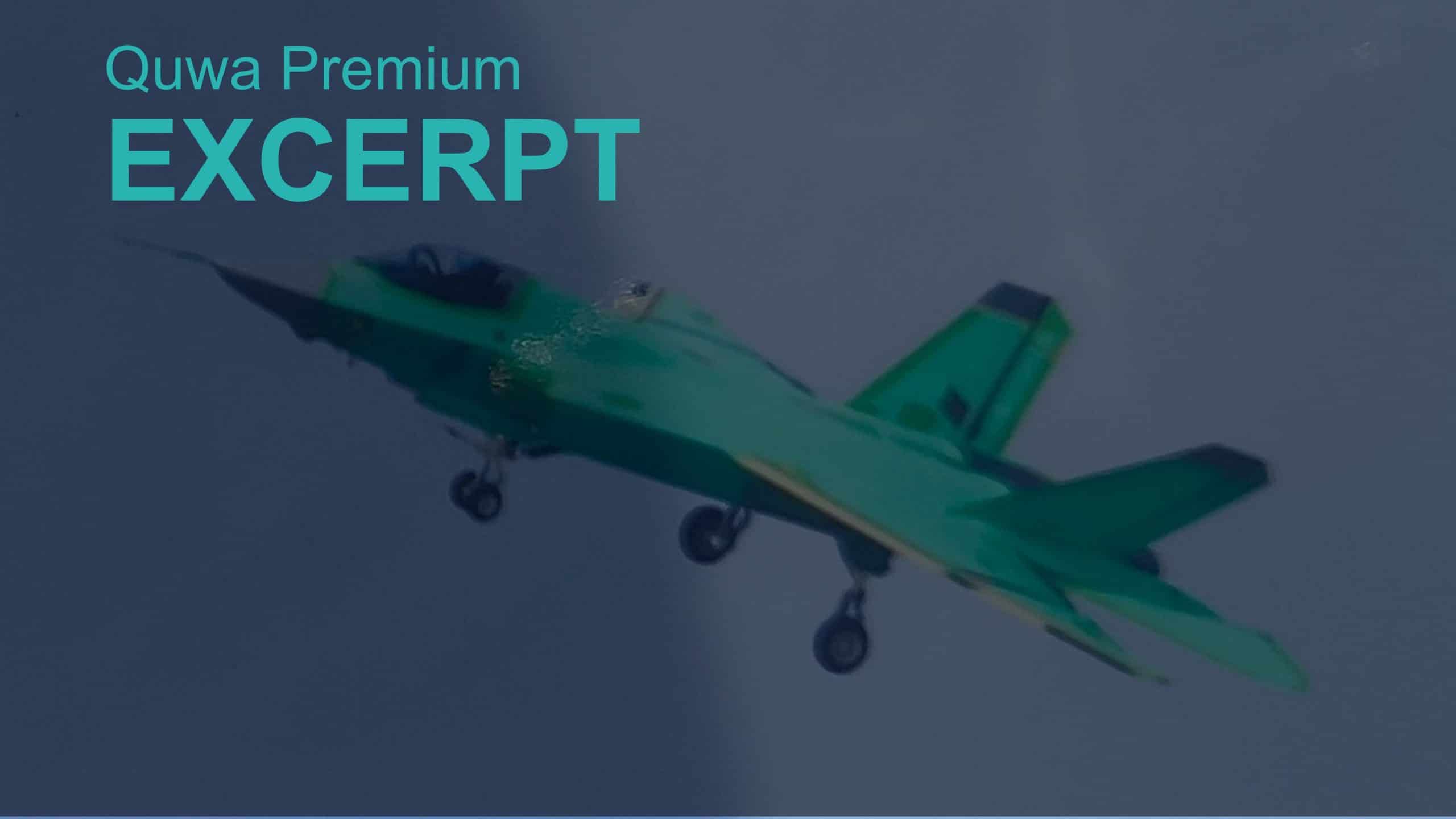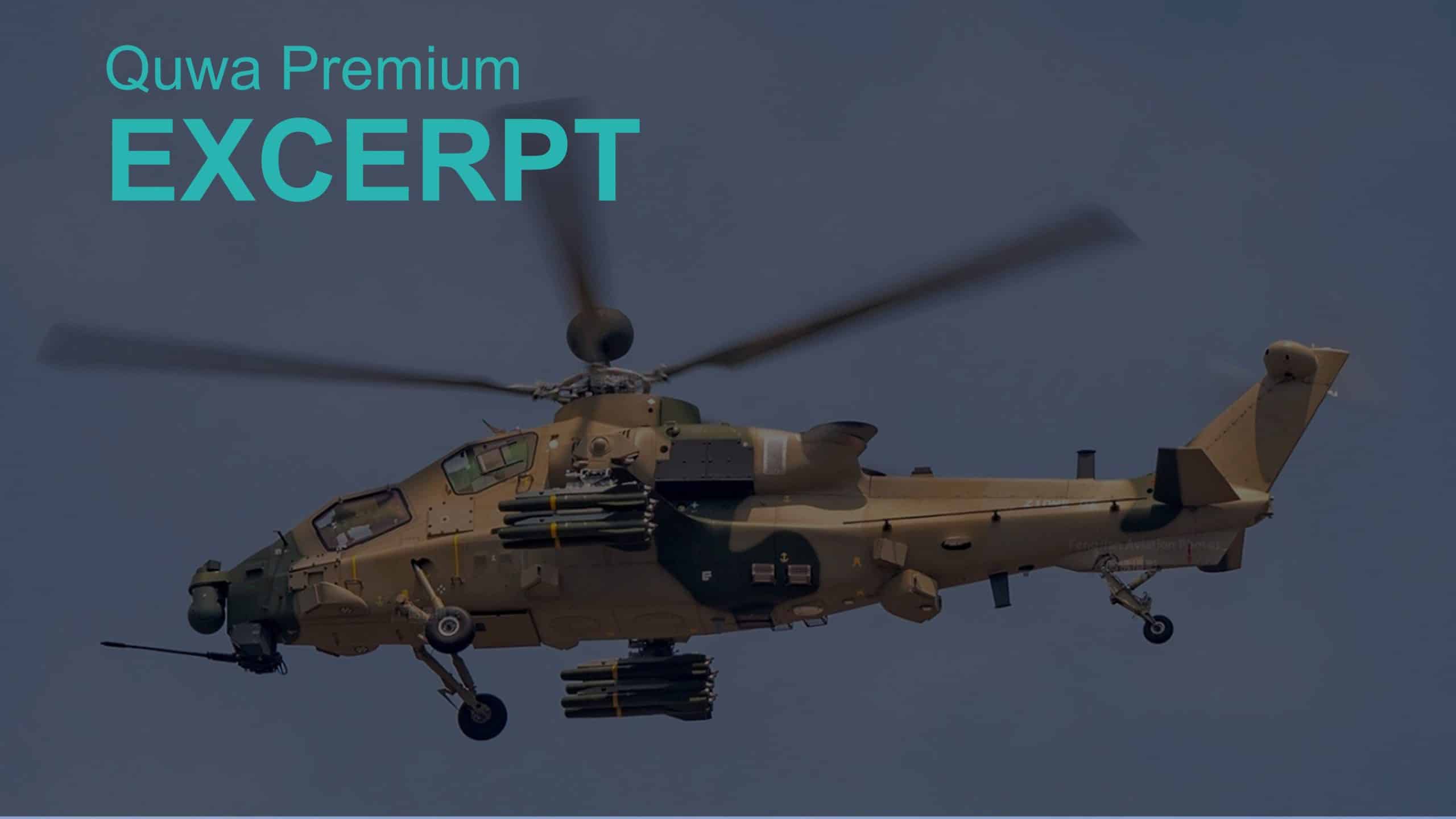5574Views

China Debuts J-35A at 2024 Zhuhai Airshow Quwa Premium
Bilal Khan
Founder of Quwa, Bilal has been researching Pakistani defence industry and security issues for over 15 years. His work has been cited by Pakistan's National Defence University (NDU), the Council of Foreign Relations, Bulletin of Atomic Scientists, Centre of Airpower Studies and many others. He has a Hons. B.A in Political Science and Masters of Interntional Public Policy from Wilfrid Laurier University in Waterloo, Ontario, Canada.
China will officially debut the Shenyang J-35A, its latest stealth fighter aircraft, at the 2024 Zhuhai Airshow, which is set to take place from 12 to 17 November.
The J-35A is expected to be the land-based variant of the J-35, a new carrier fighter the Shenyang Aircraft Corporation (SAC) is developing for the People’s Liberation Army Navy (PLAN).
However, it now appears that the SAC J-35A will be marketed to the People’s Liberation Army Air Force (PLAAF) as well as key overseas buyers, such as Pakistan, which committed to buying the fighter (then called the J-31) at the start of 2024.
The J-35 and J-35A are further developments of the FC-31/J-31, which SAC had originally developed for the export market as an alternative to the Lockheed Martin F-35 Lightning II.
Origins in the FC-31 Program
The first prototype flew in October 2012 and, at the time, was powered by a pair of Klimov RD-33 turbofan engines. In December 2012, SAC revealed and flew a second prototype with numerous design changes, notably revised vertical stabilizers and single-piece canopy. Moreover, there were rumours that SAC fitted the new prototypes with the locally built Guizhou WS-13 turbofan engine in place of the Russian RD-33s.
In October 2018, there were rumours that the PLAN selected the J-31 or FC-31 design as the basis for its next-generation carrier-based jet. By 2021, a full-scale mock-up of this new fighter appeared, boasting a wider wingspan, revised front fuselage and cockpit area, and generally larger airframe. This unit was dubbed the J-35.
SAC carried out the maiden test flight of the J-35 prototype in October 2021, with carrier-based testing occurring from 2024, if not earlier. The land-based variant, dubbed J-35A, may have entered development at around the same time as the naval version. The first J-35A prototype began its test flights in September 2023.
While derived from a shared platform, the land-based J-35A has a few design differences compared to the naval J-35. For example, analysts observed some differences in the rudders of the J-35A and naval J-35.
By omitting the carrier-specific equipment, the J-35A would also be lighter in weight compared to the naval J-35.
A first interesting difference between the new J-35A and the J-35 naval version is the different rudder size & configuration on the Air Force version. pic.twitter.com/LBPegP7LPX
— @Rupprecht_A (@RupprechtDeino) November 4, 2024
What Makes the J-35A Promising?
Currently, specific details about the J-35A’s capabilities are not publicly known. However, the previously released specifications of the FC-31, which the J-35A is ultimately based on, may offer a general idea of the fighter’s capabilities.
The FC-31 promised a total payload of nearly 8,000 kg, with 2,000 kg being available through an internal weapon’s bay. In addition, it had a top speed of Mach 1.8, service ceiling of 16,000 m, and combat radius of 1,200 km. It was capable of both air-to-air and air-to-surface roles.
Given China’s progress in aerospace and electronics technology, one should expect the J-35A to deploy a credible radar and avionics suite.
Fin-folding PL-15E BVRAAM unveiled
— Fighterman_FFRC (@Fighterman_FFRC) November 10, 2024
Allowing J-20 and J-35 to carry 6 of these internally pic.twitter.com/7oCSv3Gzk2
This will include an active electronically scanned array (AESA) radar, electronic warfare (EW) suite with electronic countermeasures (ECM) system (for jamming or spoofing radars), helmet mounted display and sight (HMD/S) system, and electro-optical targeting system (EOTS).
J-35A users can pair the fighter’s onboard electronics suite with a vast array of air-to-air, air-to-ground, and air-to-sea munitions.
These munitions include the 145 km-ranged PL-15E air-to-air missile, PL-10E advanced short-range air-to-air missile, and many options for precision-guided bombs (PGB), cruise missiles, laser-guided bombs (LGB), and air-to-ground missiles.
A Big Bet
The J-35A will arguably be the Chinese aerospace and defence industry’s biggest play to capture market share from American and European suppliers, especially in the Middle East.
This bet stems from two key factors.
First, the desire of a growing number of countries – such as Pakistan, Egypt, Saudi Arabia, and others – to build their air warfare capabilities without navigating U.S. or European strings.
While the F-35 would be unrealistic for each of these countries, the J-35A – alongside all of its munitions options – is accessible, at least from an availability standpoint, if not attractive pricing as well.
Second, there is an opportunity to entice established operators of Russian equipment – such as Algeria, Kazakhstan, Uzbekistan, and Egypt – away from Moscow.
With the J-35A, China can offer a stealth fighter today, while Russia’s solutions are either limited to low-rates of production (like the Su-57) or still under development (like the Su-75).
Beijing’s “We’ve Arrived” Moment
Some may argue that Beijing’s commercial goals for the J-35A pale in comparison to its desire for prestige.
Once SAC pushes the J-35 and J-35A into production, China will be the second country (behind only the United States) to have multiple stealth fighter types in service. Moreover, it will be the only country aside from the U.S. to be producing its own naval stealth fighter.
Hence, the J-35A is Beijing making a statement about its place in the world as both an economic power and as a military force.


